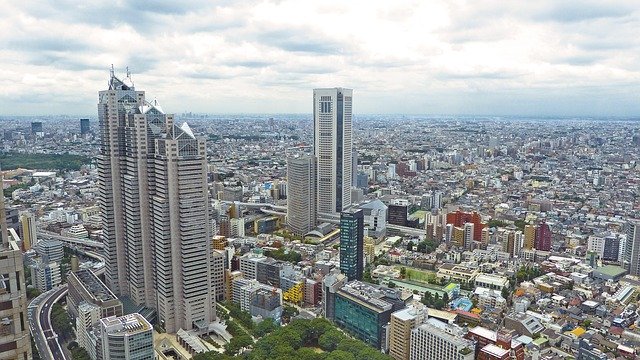Megacity
Contents |
What is a megacity?
The term ‘megacity’ refers to metropolitan areas with a total population of more than 10 million people. The definition of what constitutes a megacity generally refers to the population of an urban agglomeration, that is, it includes people living in the immediate suburbs outside of the established border of the city.
When did megacities emerge?
Megacities are a distinctly modern phenomenon, the proliferation of which has spread with the large-scale urbanisation that has occurred in many countries around the world in the 20th nad 21st centuries. Whereas only 3% of the global population lived in cities in 1800, by the end of the 20th century that figure had risen to 47%. This figure is predicted to rise to more than 70% by the second half of the 21st century, a number made even more startling by the fact that the human population is expected to have increased by two billion by that point.
Historically, the growth of big cities first occurred during the industrial revolution, when large numbers of people moved to cities in order to find work - a trend broadly associated with developed nations. In contrast, contemporary megacity development is predominantly focused in areas of the world that are the least developed.
How many megacities are there?
There are 34 cities classified as megacities. In 1995 there were 14, and in 1950, just two - New York-Newark and Tokyo.
The 34 megacities are:
- Tokyo 37.39 million
- Delhi 30.29 million
- Shanghai 27.05 million
- São Paulo 22.04 million
- Ciudad de México (Mexico City) 21.78 million
- Dhaka 21 million
- Al-Qahirah (Cairo) 20.9 million
- Beijing 20.46 million
- Mumbai (Bombay) 20.41 million
- Kinki M.M.A. (Osaka) 19.16 million
- New York-Newark 18.8 million
- Karachi 16.09 million
- Chongqing 15.87 million
- Istanbul 15.19 million
- Buenos Aires 15.15 million
- Kolkata (Calcutta) 14.85 million
- Lagos 14.36 million
- Kinshasa 14.34 million
- Manila 13.92 million
- Tianjin 13.58 million
- Rio de Janeiro 13.45 million
- Guangzhou, Guangdong 13.3 million
- Lahore 12.64 million
- Moskva (Moscow) 12.53 million
- Los Angeles-Long Beach-Santa Ana 12.44 million
- Shenzhen 12.35 million
- Bangalore 12.32 million
- Paris 11.01 million
- Bogotá 10.97 million
- Chennai (Madras) 10.97 million
- Jakarta 10.77 million
- Lima 10.71 million
- Krung Thep (Bangkok) 10.53 million
- Hyderabad 10 million
Ref UN Department of Economic and Social Affairs, Population Dynamics, World Urbanization Prospects 2018, Population of Urban Agglomerations with 300,000 Inhabitants or More in 2018, by country, 1950-2035 (thousands). https://population.un.org/wup/Download/
Expected growth
In 2021 the United Nations predicted that the number of megacities in the world would rise to 48 by 2035.
In 2022 the Institute for Economics & Peace predicted that by 2050, 70 percent of the world's population would live in mega-cities, with an additional 14 cities being added to their 2022 list of 33.
Related articles on Designing Buildings
- Agglomeration.
- Densification.
- From Calcutta to Kolkata - legacy and modernisation.
- Global Construction Megacities 2017.
- Megalopolis.
- Megastructure.
- Megatall.
- Megatrends: Globalisation.
- Megatrends: Smart Building Technology.
- Metro cities - the future of urbanisation.
- Must cities grow to compete?
- Shanghai's One City Nine Towns.
- Tokyo.
- Twin cities.
- Types of city.
External references
- National Geographic - The growth of megacities
- UN Department of Economic and Social Affairs, Population Dynamics, World Urbanization Prospects 2018, Population of Urban Agglomerations with 300,000 Inhabitants or More in 2018, by country, 1950-2035 (thousands). https://population.un.org/wup/Download/
Featured articles and news
Gregor Harvie argues that AI is state-sanctioned theft of IP.
Heat pumps, vehicle chargers and heating appliances must be sold with smart functionality.
Experimental AI housing target help for councils
Experimental AI could help councils meet housing targets by digitising records.
New-style degrees set for reformed ARB accreditation
Following the ARB Tomorrow's Architects competency outcomes for Architects.
BSRIA Occupant Wellbeing survey BOW
Occupant satisfaction and wellbeing tool inc. physical environment, indoor facilities, functionality and accessibility.
Preserving, waterproofing and decorating buildings.
Many resources for visitors aswell as new features for members.
Using technology to empower communities
The Community data platform; capturing the DNA of a place and fostering participation, for better design.
Heat pump and wind turbine sound calculations for PDRs
MCS publish updated sound calculation standards for permitted development installations.
Homes England creates largest housing-led site in the North
Successful, 34 hectare land acquisition with the residential allocation now completed.
Scottish apprenticeship training proposals
General support although better accountability and transparency is sought.
The history of building regulations
A story of belated action in response to crisis.
Moisture, fire safety and emerging trends in living walls
How wet is your wall?
Current policy explained and newly published consultation by the UK and Welsh Governments.
British architecture 1919–39. Book review.
Conservation of listed prefabs in Moseley.
Energy industry calls for urgent reform.

























Comments
[edit] To make a comment about this article, click 'Add a comment' above. Separate your comments from any existing comments by inserting a horizontal line.
Why is London not here, as Paris itself is only about 2 million and the 11 million is the urban area, and London itself is 8 million and the urban area of that is 14 million, so therefore London is quite a bit bigger than paris.
Also I can think of about 4 in South America that are not on this list.
This is a wiki site - so if you are unhappy with something, just click 'Edit this article' at the top of the page and change it.
The list is based on data from the UN Department of Economic and Social Affairs. If you have any alternative sources of data, please say what they are.